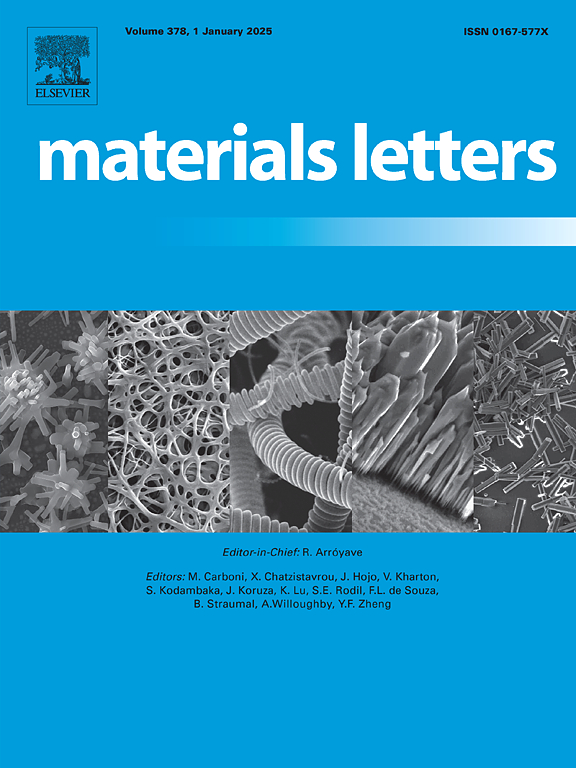Effect of quantum dot precursor concentration on carrier transport properties and photovoltaic performance of TiO2/PbS/MAPbI3 core–shell nanorod arrays
IF 2.7
4区 材料科学
Q3 MATERIALS SCIENCE, MULTIDISCIPLINARY
引用次数: 0
Abstract
To broaden the spectral response range of the device, we introduced infrared quantum dots into PbS/MAPbI3 core–shell nanorod arrays solar cells. However, the effect of the introduction of quantum dots on PSCs needs further study. In this paper, the monomer concentration is controlled by changing the precursor concentration of lead source and sulfur source, so as to realize the regulation of quantum dot size and carrier behavior. We found that when the precursor concentration is ≤ 0.015 mol/L, the overall performance of the device increases with the increase of the precursor concentration. When the precursor concentration is 0.015 mol/L, the photovoltaic performance of the device is the best: Open-circuit voltage is 0.865 V, short-circuit current is 20.21 mA/cm2, fill factor is 0.62, and photovoltaic conversion efficiency is 10.13 %. When the precursor concentration continues to increase, subject to Ostwald ripening, the agglomeration of quantum dots leads to the increase of defects in the light-absorbing layer, the transport and collection of carriers are hindered, and the overall performance of the device decreases.
量子点前驱体浓度对 TiO2/PbS/MAPbI3 核壳纳米棒阵列载流子传输特性和光伏性能的影响
本文章由计算机程序翻译,如有差异,请以英文原文为准。
求助全文
约1分钟内获得全文
求助全文
来源期刊

Materials Letters
工程技术-材料科学:综合
CiteScore
5.60
自引率
3.30%
发文量
1948
审稿时长
50 days
期刊介绍:
Materials Letters has an open access mirror journal Materials Letters: X, sharing the same aims and scope, editorial team, submission system and rigorous peer review.
Materials Letters is dedicated to publishing novel, cutting edge reports of broad interest to the materials community. The journal provides a forum for materials scientists and engineers, physicists, and chemists to rapidly communicate on the most important topics in the field of materials.
Contributions include, but are not limited to, a variety of topics such as:
• Materials - Metals and alloys, amorphous solids, ceramics, composites, polymers, semiconductors
• Applications - Structural, opto-electronic, magnetic, medical, MEMS, sensors, smart
• Characterization - Analytical, microscopy, scanning probes, nanoscopic, optical, electrical, magnetic, acoustic, spectroscopic, diffraction
• Novel Materials - Micro and nanostructures (nanowires, nanotubes, nanoparticles), nanocomposites, thin films, superlattices, quantum dots.
• Processing - Crystal growth, thin film processing, sol-gel processing, mechanical processing, assembly, nanocrystalline processing.
• Properties - Mechanical, magnetic, optical, electrical, ferroelectric, thermal, interfacial, transport, thermodynamic
• Synthesis - Quenching, solid state, solidification, solution synthesis, vapor deposition, high pressure, explosive
 求助内容:
求助内容: 应助结果提醒方式:
应助结果提醒方式:


